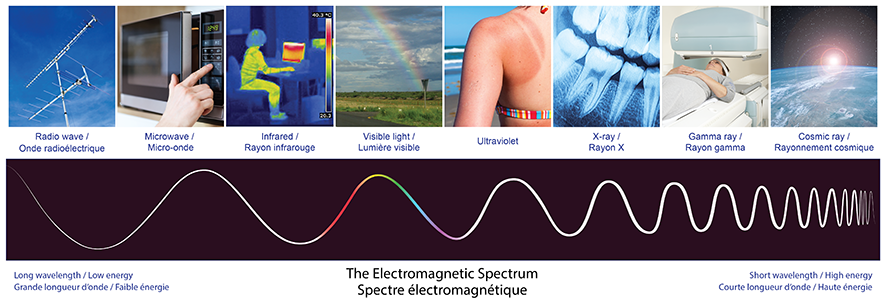What is radiation?
Radiation is energy that is transmitted in the form of waves or streams of particles. It is present everywhere in our environment.
Radiation can be described based on the effect it has on matter. Typically, it is divided into two types of radiation: ionizing and non-ionizing.
Ionizing radiation includes radiation from both natural and artificial sources, such as cosmic rays, nuclear power plants, and X-ray machines. This type of radiation has enough energy to remove electrons from an atom, a process called ionization.
Non-ionizing radiation is a relatively low-energy radiation, such as radio waves, ultraviolet rays, microwaves and sunlight, and does not have enough energy to remove electrons from an atom.

Find more information about the electromagnetic spectrum here.
Page details
- Date modified: